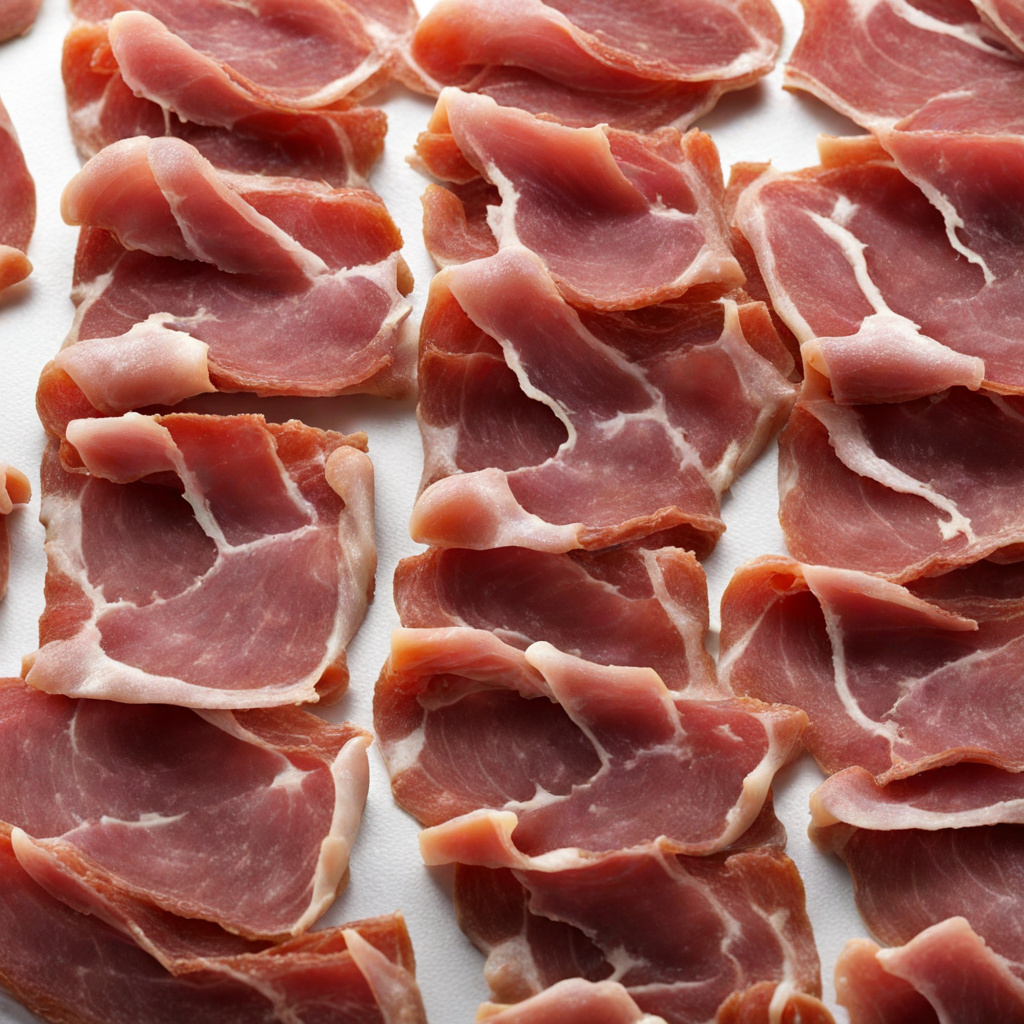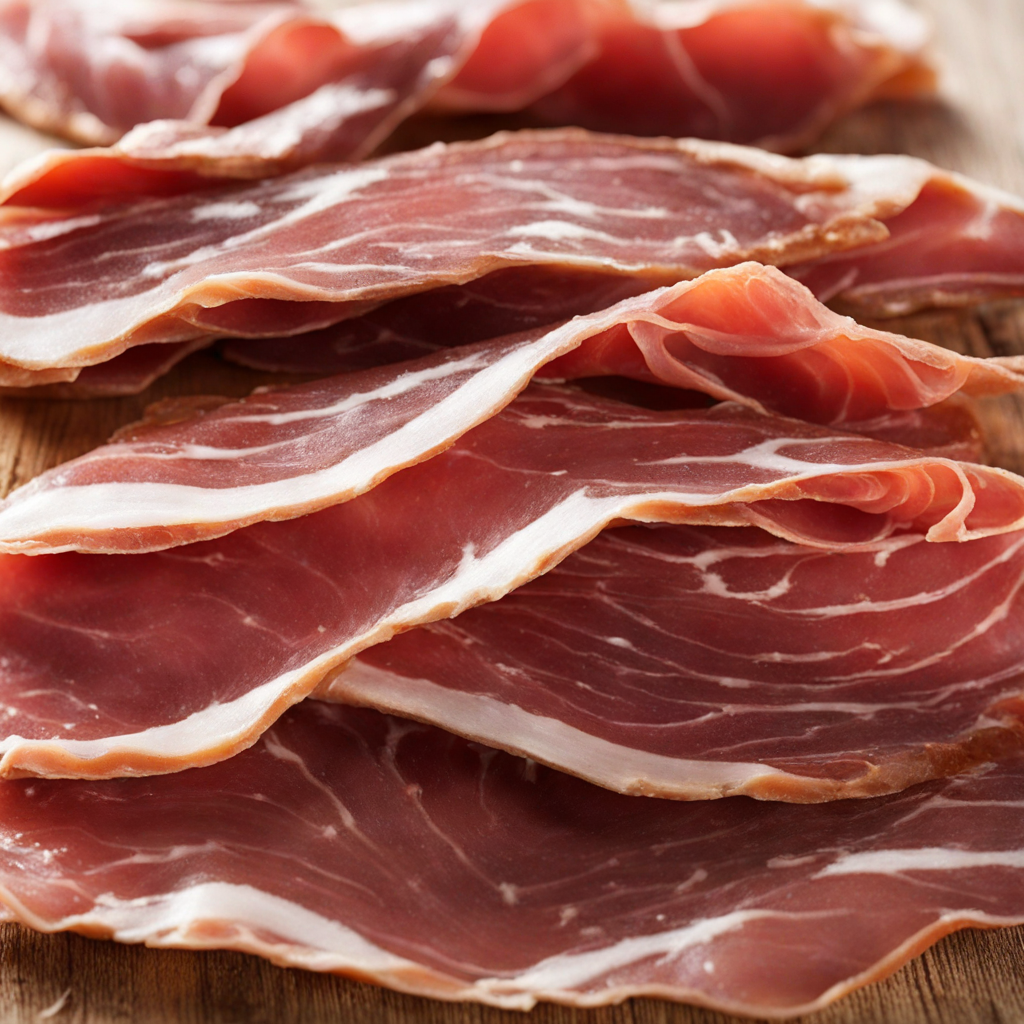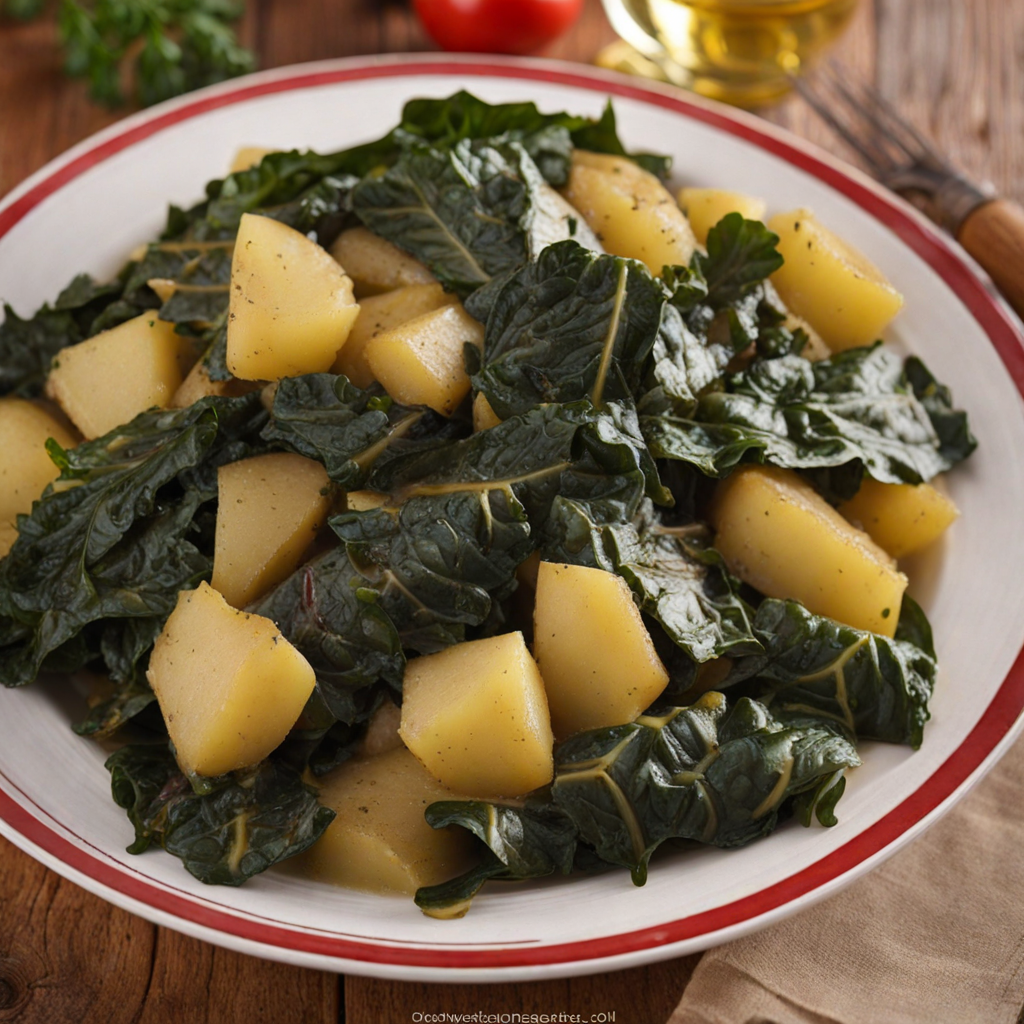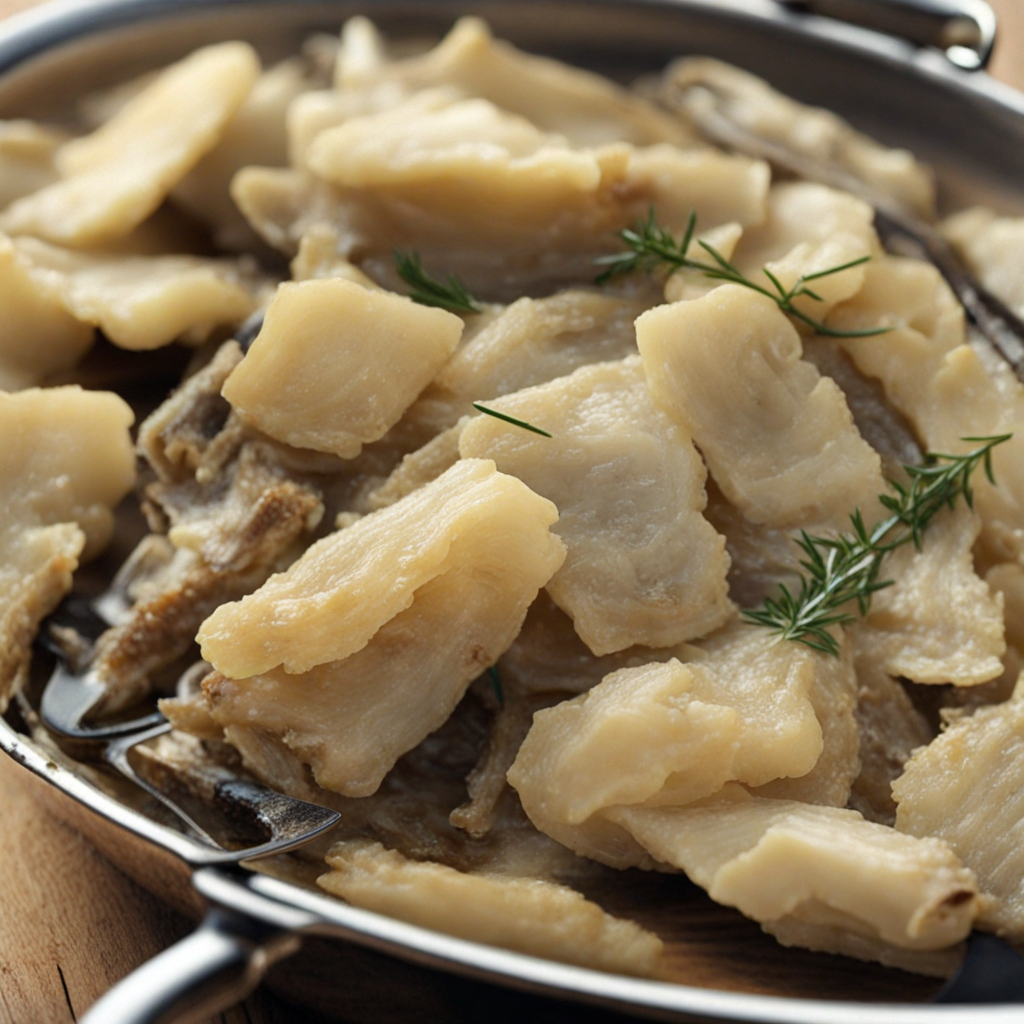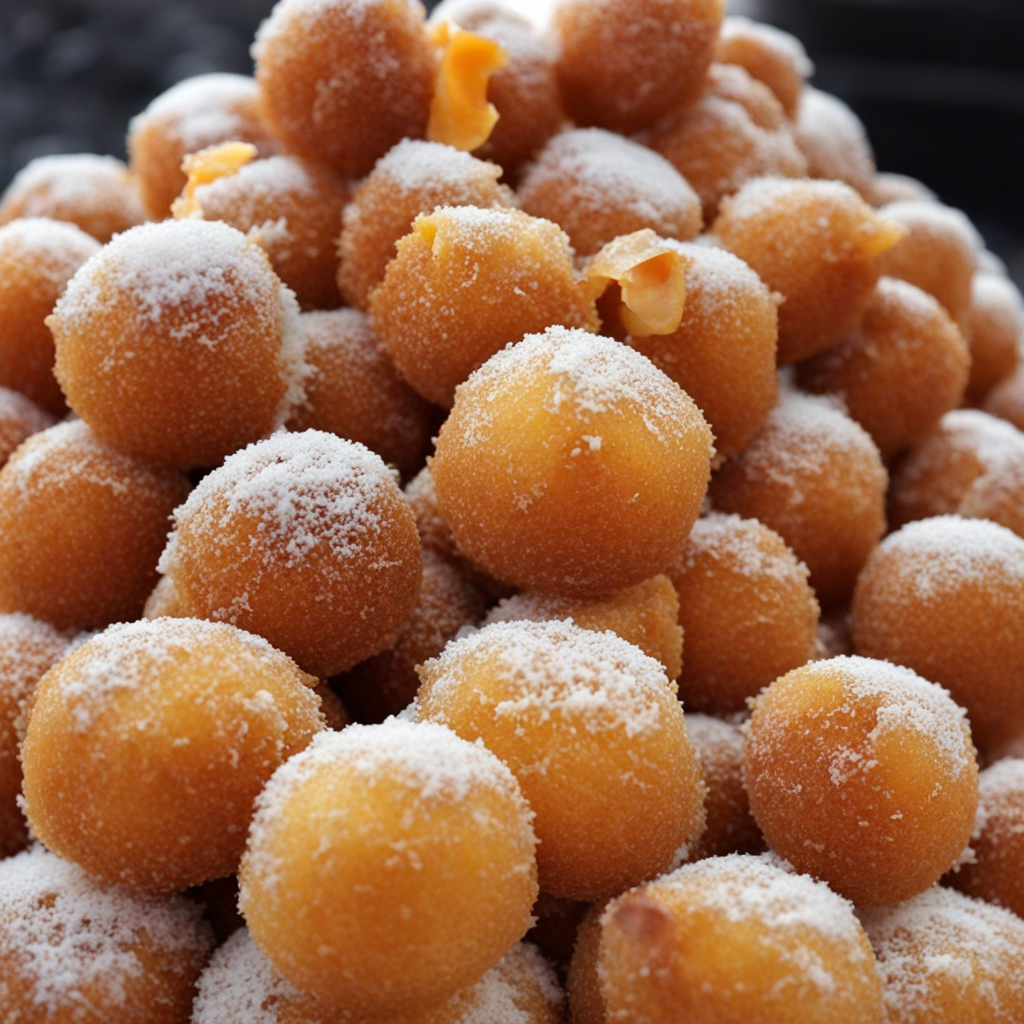Dalmatian Prosciutto
Dalmatian Prosciutto, or "Pršut," is a celebrated dry-cured ham that hails from the sun-soaked region of Dalmatia in Croatia. This artisanal delicacy is crafted from the hind leg of pigs, typically of the Kulen or other local breeds, which are raised in the picturesque hills and pastures of the region. The traditional preparation involves a meticulous process of salting, air-drying, and aging, often in the fresh coastal breezes that enhance its unique flavor. The result is a rich, savory ham with a deep, reddish-brown color and a delicate layer of fat that melts in your mouth, releasing a symphony of flavors. The taste of Dalmatian Prosciutto is a harmonious blend of sweet and salty, with a subtle nuttiness that comes from the specific herbs and spices used during its curing process. The natural environment plays a significant role in its flavor profile, as the pigs feed on acorns, wild herbs, and grass, imparting a distinctive quality to the meat. Each slice reveals a perfect balance of texture and taste, with a tender bite that is both satisfying and indulgent. When enjoyed on its own or paired with local cheeses, olives, or fresh bread, it transforms a simple meal into a gourmet experience. Serving Dalmatian Prosciutto is a celebration of simplicity and quality. It is often sliced paper-thin and can be enjoyed as part of a charcuterie board, draped over fresh figs, or wrapped around melon for a refreshing appetizer. In addition to its culinary versatility, this delectable ham also carries a cultural significance, as it is often featured in traditional Croatian gatherings and celebrations. Whether savored as a snack or incorporated into a larger dish, Dalmatian Prosciutto offers an authentic taste of Croatia that invites you to explore the rich culinary heritage of the region.
How It Became This Dish
The History of Dalmatinski Pršut: A Culinary Treasure of Croatia #### Origins and Early Beginnings Dalmatinski pršut, or Dalmatian prosciutto, is a dry-cured ham that hails from the picturesque region of Dalmatia in Croatia. This savory delicacy has a history steeped in tradition, dating back to ancient times when the preservation of meat was essential for survival in the Mediterranean climate. The origins of pršut can be traced to the Roman Empire, where techniques for curing and preserving meat were developed and refined. The Romans introduced salting, drying, and smoking as methods to extend the shelf life of pork, practices that laid the groundwork for the production of pršut. The distinctive method of curing meat in Dalmatia was influenced by the region's unique climate, characterized by hot summers and mild winters, which provided the ideal conditions for drying and curing. The combination of the dry Mediterranean winds and the natural salt from the Adriatic Sea played a crucial role in the development of Dalmatinski pršut’s flavor profile, as well as its preservation techniques. #### Cultural Significance Dalmatinski pršut is more than just a food product; it embodies the cultural identity of the Dalmatian people. Traditionally, the preparation of pršut was a communal activity, often associated with family gatherings and celebrations. Each family had its own recipes and methods, passed down through generations, which contributed to the rich tapestry of regional variations. The curing process, which can take up to a year, is a labor of love that reflects the importance of patience and craftsmanship in Dalmatian culture. The significance of pršut extends beyond its culinary appeal; it is a symbol of hospitality. In Dalmatian households, serving pršut to guests is considered a gesture of friendship and respect. It is often enjoyed with local wines, cheeses, and olives, creating a full-bodied gastronomic experience that showcases the region's bountiful offerings. Festivals celebrating Dalmatinski pršut are held throughout Dalmatia, where locals and tourists alike indulge in tastings and learn about the history and production methods of this prized delicacy. #### Development Over Time The production of Dalmatinski pršut has evolved significantly over the centuries. While the basic principles of curing remain unchanged, modern techniques and advancements in food safety have influenced the industry. In the mid-20th century, efforts were made to standardize the production process to ensure quality and authenticity. This led to the establishment of regulations and guidelines governing the curing of pršut, including the use of specific pig breeds, salt, and curing times. In 2013, Dalmatinski pršut was granted Protected Geographical Indication (PGI) status by the European Union, which recognizes its unique characteristics and the traditional methods used in its production. This designation not only protects the authenticity of the product but also helps promote the local economy and preserve the artisanal practices that have been passed down through generations. The PGI status has also increased awareness and appreciation of Dalmatinski pršut on a global scale, attracting food enthusiasts and chefs who seek to incorporate this culinary gem into their menus. The impact of globalization has also played a role in the evolution of Dalmatinski pršut. As international travel and culinary exchange have increased, so too has the exposure of Dalmatinski pršut to the world. Chefs and gastronomes have begun to recognize the value of this traditional product, incorporating it into a variety of dishes that highlight its unique flavor. From elegant charcuterie boards to innovative modern cuisine, Dalmatinski pršut has found its place in both traditional and contemporary culinary settings. #### The Craft of Curing The process of making Dalmatinski pršut is an art form that requires skill, knowledge, and respect for the ingredients. The journey begins with selecting high-quality pork, typically from indigenous breeds such as the Black Slavonian pig, known for its rich marbling and flavor. The ham is then salted with sea salt, which draws out moisture and initiates the curing process. This step is crucial, as the amount of salt and the duration of salting can significantly affect the final taste and texture. After salting, the ham is rinsed and hung in a cool, well-ventilated environment to dry. This stage can last several months, during which time the unique flavors develop. The final phase involves aging, which can last from several months to over a year, allowing the pršut to acquire its characteristic aroma and taste. The aging process is influenced by factors such as humidity, temperature, and air circulation, all of which are carefully monitored by skilled producers. Traditionally, many families in Dalmatia still adhere to time-honored methods of curing, often using wooden smokehouses and natural ingredients to enhance the flavor. The artisanal nature of pršut production is a testament to the commitment of local producers to maintain the integrity of their craft, ensuring that each piece of ham tells a story of its origin. #### Conclusion: A Culinary Legacy Dalmatinski pršut is a remarkable reflection of Croatia's culinary heritage, blending history, culture, and craftsmanship into every slice. As it continues to gain recognition both locally and internationally, it remains a cherished symbol of Dalmatian identity. The process of making pršut is not merely about food; it is about community, tradition, and the enduring connection between people and their land. In an age where fast food and mass production dominate the culinary landscape, Dalmatinski pršut stands as a beacon of artisanal quality and authenticity. It invites us to slow down, savor the flavors, and appreciate the stories behind our food. Whether enjoyed on its own or as part of a larger feast, Dalmatinski pršut is a testament to the timeless beauty of traditional cuisine and the cultural richness of Croatia.
You may like
Discover local flavors from Croatia


